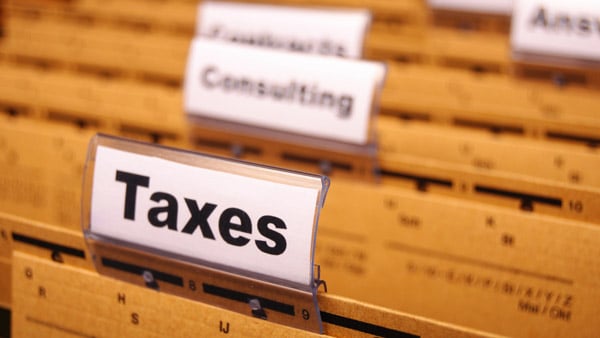 Credit: fizkes/Adobe Stock
Credit: fizkes/Adobe Stock
Every week, a new workplace trend emerges. First, there was "quiet quitting" then "snail girl era" and "resenteeism" and now "quiet vacationing" is in the spotlight. Though these terms dominate headlines and the WorkTok algorithm, they are just relatively new phrases to describe an age-old problem: rampant disengagement in the global workforce. Data from Gallup recently revealed the true magnitude of this issue, revealing roughly 75% of the global workforce is either not engaged or actively disengaged from their work. This staggering statistic not only shows how unhappy workers are but also how it's hurting the economy, costing a massive $8.9 trillion (about $27,000 per person in the US) in lost productivity every year.
Boosting employee engagement is far from an easy feat, but that is no excuse for inaction. Especially when Achievers Workforce Institute (AWI) reveals that companies can boost engagement significantly with one key step: ensuring every employee receives meaningful monthly recognition. AWI data consistently validates monthly recognition as the top results driver. Organizations that meet this threshold for every employee, not only doubles self-reported productivity and employee engagement but also more than doubles the rate of belonging in their workforce, compared to organizations that recognize their employees quarterly or less. Investing in the power of recognition is a critical step that employers must take to not only enhance employee engagement but also build a more productive, committed and resilient workforce.
Recommended For You
Understanding a common culprit behind disengagement
Organizations that recognize employees inequitably or under-recognize their whole workforce often see high rates of disengagement. Why? Because when employees feel unappreciated, they feel less connected to their work and less motivated to give their all when there's a strong chance their efforts will be overlooked. Like disengagement, Achievers Workforce Institute (AWI) finds that under-recognition is increasing, with recent data revealing that the number of 'shadow contributors' (i.e., individuals who are never recognized) has doubled over the last two years. Twenty-five percent of respondents also stated, "People just don't get recognized around here," when describing their organizations.
All employees need to feel like their work matters and that they are part of the larger team effort that actively contributes to the company's overall success. However, all too often, company leaders and managers focus their recognition and retention efforts on spotlighting their 'all-stars' (AKA top performers that comprise 20% of their workforce) and neglect the remaining 80% — who actually need recognition even more. How can companies close this gap and ensure every employee feels highly engaged and connected to their company's mission? It's important to understand the elements of a winning recognition strategy.
Building a winning (and engaging) employee recognition strategy
Recognition is most impactful when it's operating across and between silos. Forward-thinking companies and HR leaders not only know the power of recognition – but they also know it's important to consider many areas of their business when deploying a recognition strategy and measuring its success. For instance, a successful recognition program ensures managers and peers connect their acts of employee appreciation with their company's goals and mission. This not only reinforces positive behaviors and makes work more engaging, but it helps maintain company culture. Additionally, when companies interweave recognition through other people initiatives — such as DEI programs, employee learning and development, and talent acquisition — companies can accelerate their growth and provoke lasting change.
Organizations should also measure recognition's success by examining how it impacts other key metrics (such as employee morale, productivity, employee retention, and engagement.) Though the latter metric is top of mind due to Gallup's recent data, AWI finds that 31% of companies still don't leverage recognition data to support employee engagement initiatives. This is a problem, as measuring specific business results (beyond recognition usage) is one of five must-haves for strategic recognition. If employee performance metrics aren't seeing much improvement even after aligning them with recognition data, based on HR leaders who say that their recognition programs drive measurable business results, AWI advises employers to take the following steps:
- Embrace high quality, high quantity, low-monetary recognition – encourage employees to give meaningful praise frequently (even if these recognition moments don't include monetary rewards)
- Don't set it and forget it: consistently promote and reevaluate your recognition program
- Avoid giving employees another app to toggle through – integrate your recognition program with apps like Microsoft Teams and Zoom, so it's accessible in employee's daily flow of work
- Power meaningful, personalized rewards at scale: praise employees how they want to be praised – and map these recognition moments back to core values
Empowering a dynamic workforce
Creating a future where every employee feels motivated, valued and inspired to achieve greatness is no small task. But, by examining the data, one thing is abundantly clear. Meaningful change is needed to address the global workforce engagement crisis. Luckily, a strong recognition program can move mountains — not only empowering a more engaged and resilient workforce, but also a stronger and more dynamic economy. Building this program all boils down to identifying the right, science-backed strategy.
Caitlin Nobes, Head of Workforce Research and Content at Achievers Workforce Institute
© 2025 ALM Global, LLC, All Rights Reserved. Request academic re-use from www.copyright.com. All other uses, submit a request to [email protected]. For more information visit Asset & Logo Licensing.







